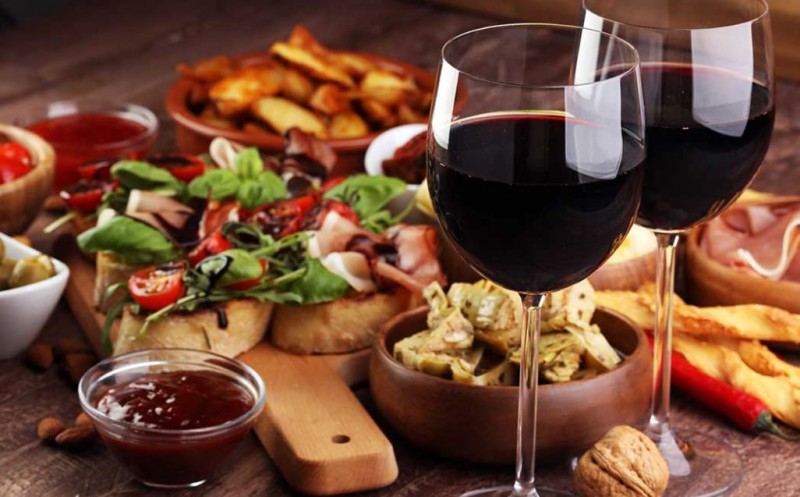
Wine and food have a harmonious relationship that has been celebrated for centuries. Pairing the right wine with a well-prepared meal can enhance flavors, elevate the dining experience, and create lasting memories. However, mastering the art of wine and food pairing can be intimidating for many. With an understanding of some key principles and a willingness to experiment, anyone can unlock the secrets of this delightful culinary art. Wine and food matching is the process of pairing food dishes with wine to enhance the dining experience. In many cultures, wine has had a long history of being a staple at the dinner table, and in some ways both the winemaking and culinary traditions of a region will have evolved together over the years. Rather than following a set of rules, local cuisines were paired simply with local wines. Wine has had a long history of being served as an accompaniment to food. The early history of wine has its origins as another dietary staple and a beverage that was often more sanitary than the local water supply. There is little evidence that much serious thought was given to pairing particular dishes with particular wines with most likely whatever wine was available being used. However, as culinary traditions in a region developed, so too did local winemaking traditions.
In this article, we will delve into the art of wine and food pairing. From understanding the basic principles of complementary flavors and textures to exploring regional pairings and considering personal preferences, this guide will empower you to confidently navigate the world of wine and food, creating unforgettable gastronomic experiences.
Complementary Flavors and Textures
The foundation of successful wine and food pairing lies in the harmonious combination of complementary flavors and textures. Consider how the wine's acidity, sweetness, and body interact with the dish's ingredients and seasonings. A well-balanced pairing should enhance both the wine and the food, bringing out the best in each.
Wine and Food Regional Pairings
Explore classic wine and food pairings from various regions around the world. The culinary traditions of specific regions often complement the local wine offerings. For example, Italian Chianti with tomato-based pasta dishes or French Champagne with oysters are timeless combinations that showcase regional synergy.
Consider the Dominant Element
When pairing wine with complex dishes, consider the dominant element in the dish. For instance, if a dish features a rich and flavorful sauce, focus on matching the wine to the sauce rather than the protein. This approach ensures that the wine enhances the most dominant flavors in the meal.
Pairing Based on Cooking Method
Consider the cooking method used for the dish when selecting a wine. Grilled or roasted foods tend to pair well with wines that have robust flavors, while delicate preparations may call for lighter, more subtle wines.
Balance Intensity and Weight
Strive for a balance between the intensity and weight of the wine and the dish. Light-bodied wines work well with delicate dishes, while full-bodied wines complement heartier and richer foods. Additionally, matching the intensity of flavors between the wine and the dish ensures a harmonious pairing.
Explore Contrasting Pairings
While complementary pairings are classic, don't be afraid to experiment with contrasting pairings. Sometimes, contrasting flavors can create exciting and unexpected taste sensations. For example, pairing a spicy Asian dish with a slightly sweet Riesling can create a delightful balance.
Take Note of Tannins
When pairing wines with dishes high in fat or protein, consider the tannins in the wine. Tannins, found predominantly in red wines, can interact with the proteins and fats in food, softening the wine's texture and enhancing the overall experience.
Personal Preferences and Exploration
Ultimately, wine and food pairing is a subjective experience. Consider your personal preferences and palate when making selections. Don't be afraid to explore different wine varieties and experiment with unconventional pairings to find combinations that delight your taste buds.
Remember Dessert Wines
Pairing wine with desserts is a unique opportunity to explore sweet and fortified wines. From late-harvest Rieslings to luscious Port wines, these dessert beverages can beautifully complement sweet treats, highlighting their flavors without overpowering them.
Embrace the Joy of Learning
Wine and food pairing is an ongoing journey of discovery and learning. Embrace the joy of exploring new cuisines, wine regions, and flavor combinations. Attend wine tastings, take cooking classes, and engage with sommeliers and wine enthusiasts to expand your knowledge and appreciation.
The art of wine and food pairing opens a world of culinary delights, where the right combination can elevate an ordinary meal into an extraordinary experience. Understanding the principles of complementary flavors and textures, exploring regional pairings, and considering personal preferences are all essential aspects of mastering this art. With an open mind and adventurous spirit, embark on a journey of discovery, savoring the harmony of wine and food as they come together in a delightful symphony on your palate. Whether hosting a dinner party or enjoying a quiet meal at home, let the art of wine and food pairing enrich your culinary adventure and create cherished memories to savor for years to come.
Exploring the Health Benefits of Strawberry Rhubarb Wine
Best Wines to Have as a Beginner in 2023
Whip Up Culinary Delights with These Mouthwatering Recipes